|
|
Post by deuce on Jun 23, 2017 10:00:52 GMT -5
|
|
Deleted
Deleted Member
Posts: 0
|
Post by Deleted on Jun 28, 2017 13:00:31 GMT -5
|
|
Deleted
Deleted Member
Posts: 0
|
Post by Deleted on Jun 30, 2017 15:10:53 GMT -5
|
|
|
|
Post by Von K on Jul 1, 2017 17:38:58 GMT -5
Here's another one from Ganbat Badamkhand.  I said this along time ago on the old board, but it bears repeating - thanks for introducing us to the art of Ganbat Badamkhand Hun. His stuff is awesome. I really like his American indian pics too, though he hasn't done many of those. |
|
Deleted
Deleted Member
Posts: 0
|
Post by Deleted on Jul 6, 2017 18:25:10 GMT -5
OF THE ORIGIN OF THE IDI-QUT AND THE LAND OF THE UIGHUR ACCORDING TO THEIR OWN BELIEF
by Ata-Malik Juvaini, Persian historian at the court of Hulegu Khan. The Uygurs were tough, but got civilized real quick. Nevertheless, all that experience with sedentary civilization made the Uygurs ideal candidates to show the Mongols the ropes. The Uygurs were tough, but got civilized real quick. Nevertheless, all that experience with sedentary civilization made the Uygurs ideal candidates to show the Mongols the ropes. I have included some notes and translations within the rounded brackets () Hope it helps  AFTER writing their history we have recorded something of what is found in their books regarding their beliefs and religion ; which we offer as matter for astonishment and not as truth and certainty. AFTER writing their history we have recorded something of what is found in their books regarding their beliefs and religion ; which we offer as matter for astonishment and not as truth and certainty.
It is the opinion of the Uighur that the beginning of their generation and increase was on the banks of the river Orqon, whose source flows from a mountain which they call Qara-Qorum (Kara/black & Korum/rock); the town that was built by Qa'an In the present age is also called after that mountain. Thirty rivers have their sources in It; upon each river there dwelt a different people; the Uighur forming two groups upon the Orqon (Orkhon river in Mongolia). When their number Increased, after the manner of other peoples they appointed a chief from their midst and yielded him obedience.
And so they continued for five hundred years until the appearance of Buqu Khan. Now it is said that Buqu Khan was Afrasiyab (ruler of Turan in Shahname); and there are ruins of a well, and also a great stone, on. the hillside near Qara-Qorum, and this well is said to be that of Bizhan (Bizhan, an Iranian hero, he was imprisoned by Afrasiyab in a well). There are also the ruins of a town and a palace on the banks of this river, of which the name is Ordu-Baligh (translates as encampment-city) though it is now called Ma'u-Baligh (Bad-city). Outside the ruins of the palace, opposite the gate, there lie stones engraved with inscriptions, which we have seen ourselves (so, Juvaini has probably seen these Uighur stones inscribed with the ancient Turkic runes). During the reign of Qa'an these stones were raised up, and a well was discovered, and in the well a great stone tablet with an inscription engraved upon it.
The order was given that everyone should present himself in order to decipher the writing ; but no one was able to read it. Then people were brought from Khitai (China) who are called . . .( there's a bit missing in the manuscript, but it probably reads Kam : Turkic for shaman) : it was their writing that was engraved on the stone [and this is what was written:]
In that age two of the rivers of Qara-Qoram, one called the Tughla (Tula river in Mongolia) and the other the Selenge (there is no confluence of the Tula and the Selenga, the Tula flows into the Orkhon river), flowed together in a place called Qamlanchu (Unknown location, probably mythical); and close together between these two rivers there stood two trees ; the one they call Qusuq (Siberian birch) which is a tree shaped like a pine, whose leaves in winter resemble those of a cypress and whose fruit is like a pignon {cbilgbiiza} both in shape and taste ; the other they call toz (the Birch). Between the two trees there arose a great mound, and a light descended on it from the sky; and day by day the mound grew greater. On seeing this strange sight, the Uighur tribes were filled with astonishment ; and respectfully and humbly they approached the mound : they heard sweet and pleasant sounds like singing. And every night a light shone to a distance of thirty paces around that mound, until just as with pregnant women at the time of their delivery, a door opened and inside there were five separate tent-like cells in each of which sat a man-child : opposite the mouth of each child hung a tube which furnished milk as required ; while above the tent was extended a net of silver. The chiefs of the tribe came to view this marvel and in reverence bowed the knee of fealty. When the wind blew upon the children they gathered strength and began to move about. At length they came forth from the cells and were confided to nurses, while the people performed all the ceremonies of service and honour. As soon as they were weaned and were able to speak they inquired concerning their parents, and the people pointed to those two trees.
They approached the trees and made such obeisance as dutiful children make to their parents ; they also showed respect and honour to the ground in which the trees grew. The trees then broke into speech and said : 'Good children, adorned with the noblest virtues, have ever trodden this path, observing their duty to their parents. May your lives be long, and your names endure for ever! All the tribes of that region came to view the children and showed them the honours due to the sons of kings ; and as they left they gave each boy a name : the eldest they called Sonqur Tegin, the second Qotur Tegin (Tegin's a Turko-Mongol title that translates as Prince), the third Tukel Tegin, the fourth Or Tegin and the fifth Buqu Tegin.
After considering these strange matters the people agreed that they must make one of the children their leader and their king; for they were, they said, sent by God Almighty. They found Buqu Khan (this semi-mythical Khan was known to Rashid-al-Din and Marco Polo) to be superior to the other children in beauty of
features and strength of mind and judgement ; moreover he knew all the tongues and writings of the different peoples.
Therefore all were of one accord that he should be made Khan ; and so they gathered together, held a feast and placed him on the throne of the Khanate. Thereafter he spread out the carpet of justice and rolled up the scroll of oppression; and his retainers and domestics and followers and servants were many. God Almighty sent him three ravens (zagb) that knew all tongues ; and wherever he had a matter on hand thither the ravens would go to act as spies and bring back news.
Some rime later, when he lay asleep one night in his house, the form of a maiden came down through the smoke-hole and awakened him ; but in his fear he feigned to be still asleep. On the second night she came again ; and on the third night, following the advice of his vizier, he departed with the riiaiden to a mountain which they call Aq-Tagh (White Mountain), where they conversed together until the break of dawn. And for a space of seven years, six months and twenty-two days he resorted thither every night, and they spoke with each other. Upon the last night,
when the maiden bade him farewell, she said to him : 'From East to West shall be thy domain. Be diligent and zealous in this work, and care for the people.'
Hereupon he assembled armies and dispatched three hundred thousand picked men under Sonqur Tegin against the Mongols and the Qirqiz ; a hundred thousand men, similarly equipped, under Qotur Tegin against the Tangut ; and the like number of men under Tukel Tegin against the Tibetans ; while he himself with three hundred thousand men marched against the Khitayans (Probably the Chinese, not the actual Mongolian Khitan tribe), leaving his other brother behind in his stead. Each returned in triumph from the place to which he had been sent, and with so much booty as was beyond measure or computation; and they brought many people from all sides to their home on the Orqon and built the town of Ordu-Baligh ; and the whole of the East came under their sway.
Then Buqu Khan beheld in a dream an aged man, clothed in white and holding a white staff; who handed him a jasper stone shaped like a pine-cone, saying : 'If thou canst keep this stone, then shall the four corners of the world be under the
shadow of the banner of thy command.'
His vizier also dreamt a similar dream. In the morning they began to prepare his army ; and he set out for the regions of the West. When he had come to the boundary of Turkestan he beheld a pleasant plain with abundance of grass and water. He himself settled here and founded the town of Balasaqun, which is now called Quz-Baligh (location unknown, probably near Tokmak, Uzbek Republic) ; and sent out his armies in all directions. In the space of twelve years they had conquered all the climes, leaving nowhere a single rebel or insurgent. And when they had come to a place where they saw men with animal limbs they knew that beyond this there was no inhabitable land ; and they returned home bearing with them the kings of the different countries whom they presented to Buqu Khan in that place. He received each of them with the honour befitting his station; except the
king of India, whom, because of his hideous appearance, he would not admit to his presence. He sent them all back to their kingdoms and fixed a tribute upon each. Then, as there was no longer any obstacle in his path, he decided to return from
thence ; and so came back to his former place of abode.
The reason for the idolatry (Buddhism), of the Uighur is that in those days they knew the science of magic, the experts in which art they called qam (Shaman). Now there are still to this day among the Mongols people that are overcome with ubna (depravity in Arabic) and speak vain things, and claim that they are possessed by devils who inform them of all things. We have questioned certain people regarding these qam, and they say : "We have heard that devils descend
into their tents by the smoke-hole and hold converse with them. And it is possible that evil spirits are intimate with some of them and have intercourse with them. Their powers are at their strongest just after they have satisfied their natural lust in an unnatural way.'
In a word, these people we have mentioned are called qam ; and when the Mongols had no knowledge or science, they had from ancient times yielded obedience to the words of these qam ; and even now their princes still believe in their words and prayers, and if they engage upon some business they will conclude nothing until these astrologers have given their consent. And in a similar manner they heal their sick.
Now the religion of Khitai was idolatry. Buqu dispatched a messenger to the Khan [of that country] and summoned the toyins (originally from Chinese tao-jen, translates as man of the way) to him. When they arrived he confronted the two
parties so that they might choose the religion of whichever party defeated the other. The toyins call a reading from their [holy] book nom (Buddhist Dharma). Now the nom contains their theological speculations and consists of idle stories and traditions; but excellent homilies are likewise to be found in it such as are consonant with the law and faith of every prophet, urging men to avoid injury and oppression and the like, to return good for evil and to refrain from the injuring of animals, etc. Their dogmas and doctrines are manifold; the most typical is that of reincarnation. They say that the people of to-day existed several thousand years
ago : the souls of those that wrought good deeds and engaged in worship attained a degree in accordance with their actions, such as that of king, or prince, or peasant, or beggar ; while the souls of those that had engaged in debauchery, libertinism, murder, slander and injury to their fellow-creatures descended into vermin, beasts of prey and other animals ; and so they are punished for their deeds. But then ignorance is [everywhere] in the ascendant : 'they say that which they do not'
When they had read certain noms, the qam were completely dumbfounded. For this reason the Uighur adopted idolatry as their religion, and most of the other tribes followed their example,, And there are none more bigoted than the idolaters of the East, and none more hostile to Islam.
As for Buqu Khan he lived happily until the time when he passed away. And these lies which we have recorded are but few out of many and but a hundredth of what might have been related. Our purpose in recording them was to expose the ignorance and folly of this people. History of the World Conqueror, translated by John Boyle, Manchester, 1958, Volume 1, pages 53-61.
|
|
Deleted
Deleted Member
Posts: 0
|
Post by Deleted on Jul 9, 2017 20:44:29 GMT -5
Not long till The Kurultaj (Tribal Gathering or Assembly) in Bugac, Hungary, between the 11-13 August 2017.I'll attend the Kurultaj one of these days - looks like a great celebration of Eurasian nomadic culture. 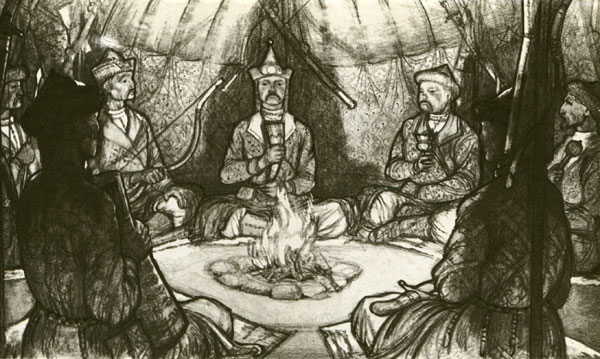 Here's the program from last year's Kurultaj. Introduction of the guests – the representatives of 27 nationsThe list of participating nations and tribes: Azerbaijani, Avar, Bashkir, Bulgarian, Balkar, Buryat, Chuvash, Gagauz, Kabardino, Karachay, Karakalpak, Kazakh, Madjar tribe of Kazakhstan, Kirghiz, Kumi, Mongolian, Nogai, Uzbek, Madzsar tribe of Uzebekistan, Tatar, Turkish, Tuva, Turkoman, Uyghur, Yakut, Hungarian.Archeological and anthropological exhibitions in the ’’Yurt of the Ancestors’’One of the most successful elements of the Kurultaj is the anthropological and archeological exhibition, called the ’’Yurt of the Ancestors’’, which consists of two huge yurts. The exhibition is arranged in cooperation with several museums. This year, there will be a unique additional exhibition, called the Elite Corps, which won the title of ’’Exhibition of the Year’’ in 2014. The exhibition shows the rich archeological finds of cemeteries located near Karos of the Hungarian conquest period. Its elements are exhibited in the Ottó Herman Museum of Miskolc, and now part of the exhibition will be visible at the Kurultaj as well.’’Yurt of Atilla’’, half-circle painting of ’’The Arrival of the Huns’’, exhibitionsJust like in other years, in between the two exhibition yurts, the world’s largest yurt will be constructed, the ’’Yurt of Atilla’’. The diameter of the yurt measures over 20 meters. The reconstructions of archeological finds, the anthropological facial reconstructions, and paintings in the yurt make the era of the Huns come alive.The world’s largest yurt can be disassembled and it’s constructed of natural materials. Apart from the archeological exhibition, inside the yurt we will also be able to admire the enormous half-circle painting, called ’’The Arrival of the Huns’’. The painting measures over 20 meters and is a tribute to Atilla the Hun, who founded an empire in the Carpathian Basin.The anthropological and archeological exhibition in the ’’Yurt of Atilla’’ is coordinated by a professional scientific team. The three huge yurts together are called the ’’Yurts of the Ancestors’’, and the exhibitions inside these yurts are realized through the cooperation of several scientific institutions.Procession of Avar and Hungarian armoured horsemen, clothing of Hunnic leaders, Hun armyIn the year 2010, the greatest sensation of the Kurultaj was the reconstruction of an Avar armour. In 2012, a group of Hungarian warriors with reconstructed armours of the Hungarian conquest period was also presented. In 2014, we could in addition admire the reconstruction of a Hunnic leader’s clothing, and a group of warriors following him on the battle field.Experimental archeology demonstrationsArcheologists and artists will present ancient bronze casting techniques in a spectacular way. Also, we will be able observe a master of a very important craft of that period that’s become rare in our time, namely the weaponsmith. There will be a possibility to have a look at the working process of the weaponsmith.Nomadic horse and archery competitionsThe Turan Association announces horse racing, horse wrestling, and ’Köböre’ (Kökpar – Buszkasi) competitions, as well as a unique archery obstacle course competition with valuable prizes. There is no entry fee for the competitions. In 2016, teams of 5 and 10 players will compete with each other in the ’Köböre’ championship.Armoured combat contest on footThe armoured warriors on foot are going to battle against each other, wearing 9th -11th century clothing, armours, and weapons. The battles are not based on a planned choreography; they are improvised and therefore closely resemble the real battles of that period. The duel contest will attract a huge audience, and the competitors who participate in the duels will have the chance to win significant prizes.Horseback combat demonstrations with the best warriorsDuring the three days of the event, we will be able to see numerous horseback archery and horseback combat demonstrations. Among others, the Vermes tribe from Slovakia (Upper Hungary), the ’’Pusztai Rókák’’ (Foxes from the Puszta), the Bodnár tribe, the Nagy tribe, and the Hungarian Turan Select Team will present themselves. (Note that the tribes refer to groups that belong to the Kassai Horse-Archery School.) European 9th – 11th century armoured soldiers will fight against Eastern equestrian nomadic warriors on the battle field.PresentationsIn cooperation with renowned Hungarian and foreign lecturers, just like in previous years, scientific presentations will be held in the tent of presentations. Apart from some informative presentations (journey narratives, geopolitics), there will be scientific presentations, which can be attended and understood by everyone who is interested. The topics will cover the ancient history of the Hungarians and the Turanian nations. All of the lecturers who will be presented at the Kurultaj are professional scientists and internationally recognized researchers.Handicraft demonstrations and fairPeople will have the possibility to get acquainted with the items and the work processes of craftsman and artisans. Only those who sell products that contain exclusively Hungarian (that is, from the Carpathian Basin) materials can participate in the fair.Archaic and modern versions of traditional folk music and danceThere will be Hungarian and foreign performers who were never seen in Europe before.This year, the artists of the invited brother nations who arrive to the Kurultaj will be holding demonstrations of traditional folk music and dances. For the first time, the Hungarian audience will have the possibility to see several dances and listen to music for which Europeans would have to travel thousands of kilometers to the East. The Turanian brother nations will be giving over 50 cultural performances.Remembering our ancestors – fire ritualOn the occasion of this celebration, accompanied by numerous shaman drummers, the world’s largest shaman drum will be sounded by the shamans who recall the Hungarian ancient religion. In 2016, the Hungarians and the representatives of their brother nations will continue to celebrate the memory their glorious ancestors. The distant brothers are meeting again. We invite you to join us. Let’s pay tribute to the memory of our ancestors and their great deeds.The entrance to the event is free, just like camping with a yurt. There is no entry fee for the competitions. The price of the parking spot is 800 HUF every time you enter with the car. The price of camping in a tent is 4000 HUF for the three days of the event. Naturally, the foods and drinks that are sold at the event have to be paid for, but it’s allowed to bring one’s own food.
A BRIEF HISTORY
In the minds of the Hungarian people the memory of their Central Asian origins is still very much alive. Since the mid 19th century the genealogy of the Hungarian nation has been a topic of heated debates and discussions among different scientists. Over the past half-century, especially during the communist regime, the theory of Finno-Ugric origin of the Hungarians has been aggressively imposed with complete disregard to the variety of arguments. However, archaeological, anthropological and genetic studies tell us a different story. Modern scholars, particularly archaeologists and anthropologists, are of the opinion that the anthropological specificity and culture of the Hungarian people that conquered their land and made it home, is more analogous to Central Asian Turkic people with some Iranian and Scythian influences. In addition, the origin of the Hungarian tribes, to a large extent, can be attributed to Hunnic tribal alliance. One of the most important highlights of the history of Hungarians is establishing of historical homeland under the leadership of Arpad Khan (conquest of the Carpathian Basin at the end of 9th century).
Hungary’s more than one thousand years of history in the middle of Europe has shaped its culture as the most westernized of the nomadic cultures. Today the Hungarian nation is united (without tribal division) but much of the Hungarian nation’s history is characterized by a system of tribal segmentation, like most nomadic cultures. One of the most ancient Hungarian legend is the story of binding the tribes by taking a so called “blood oath”. During this event the leaders of the allied tribes chose one from among them to be the great commander, and swore to serve him and his descendants. Almos was chosen whose name is derived from the Hungarian word “álom” (“dream” in English). The tale behind his name and of his birth is another legend. In it, a mythical bird, the Turul, (falcon – tribal totem and the ancient symbol of the Hungarians) flew through the top opening into the yurt of Emese, a daughter of one of the noble tribe leaders, while she was sleeping (and dreaming) and fathered her a son who then was named Almos.
It was then the son and successor of Almos, the great commander, Arpad, who led the tribes when they took over the territories of the Carpathian Basin, hence the Hungarians gained their historical homeland. Therefore, the great leader, Arpad, is one of the most important figures of Hungarian history and a symbol of power and unity of the nation. Thus, the dynasty that the Turul had started according to the legend is named the dynasty of Arpad (or Turul dynasty). Arpad and his descendants have written the most glorious chapters of Hungarian history. This dynasty ruled Hungary for over 400 years. Lord Árpád Link: kurultaj.hu/english/
|
|
Deleted
Deleted Member
Posts: 0
|
Post by Deleted on Jul 9, 2017 21:08:27 GMT -5
Just in case you're wondering here's The enormous half-circle painting, called ’’The Arrival of the Huns’’ displayed in the "Yurt of Attila". The painting measures over 20 meters and is a tribute to Atilla the Hun, who founded an empire in the Carpathian Basin.  Zalán Kertai, the artist. |
|
|
|
Post by deuce on Jul 11, 2017 18:45:27 GMT -5
|
|
Deleted
Deleted Member
Posts: 0
|
Post by Deleted on Jul 13, 2017 13:50:55 GMT -5
|
|
|
|
Post by deuce on Jul 17, 2017 17:46:43 GMT -5
|
|
Deleted
Deleted Member
Posts: 0
|
Post by Deleted on Jul 18, 2017 16:01:19 GMT -5
Thanks for the link Deuce. Some nice photos there. Here's one of a Dolgan girl (Turkic) 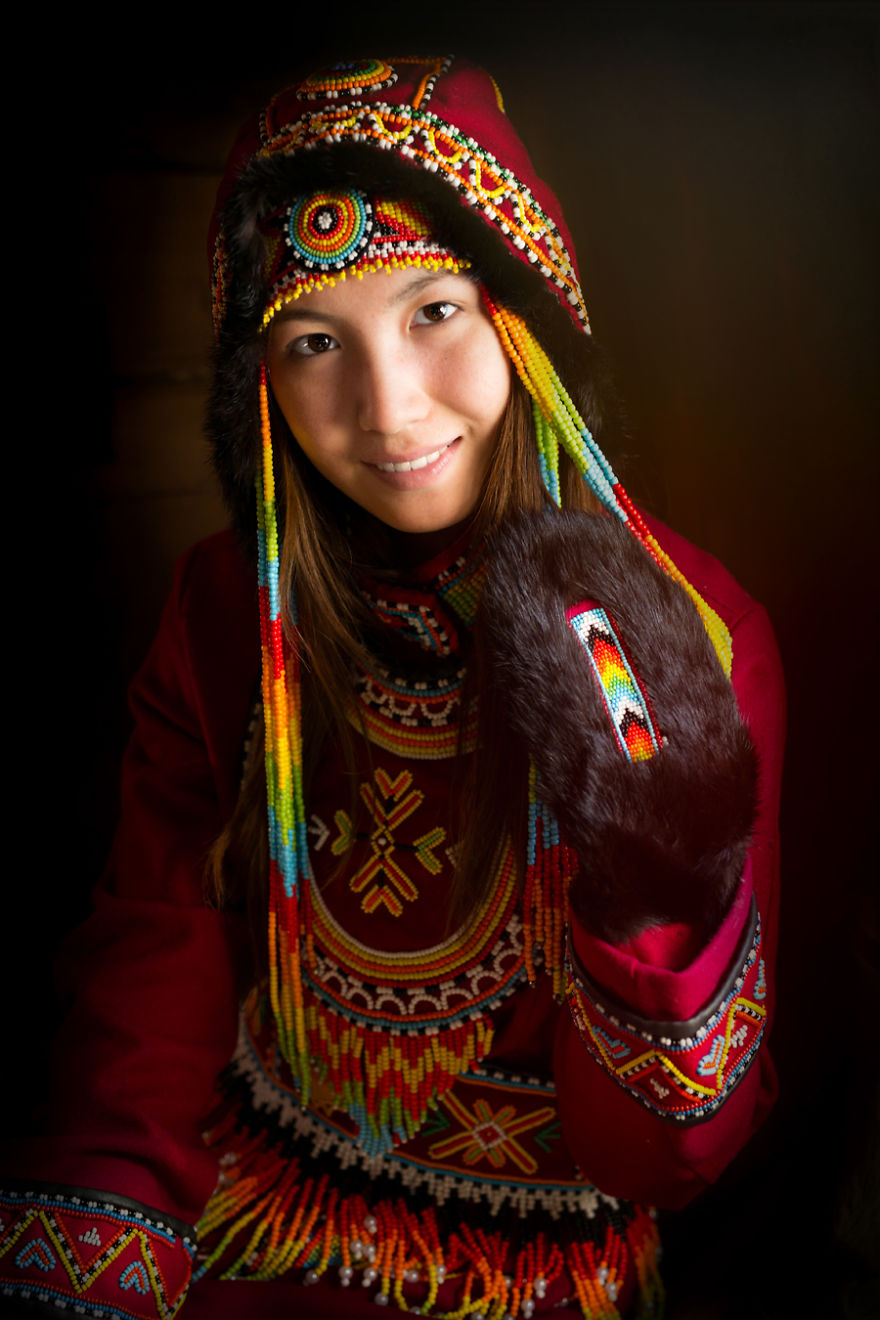 Nivkhi man (Language isolate or Paleosiberian?) 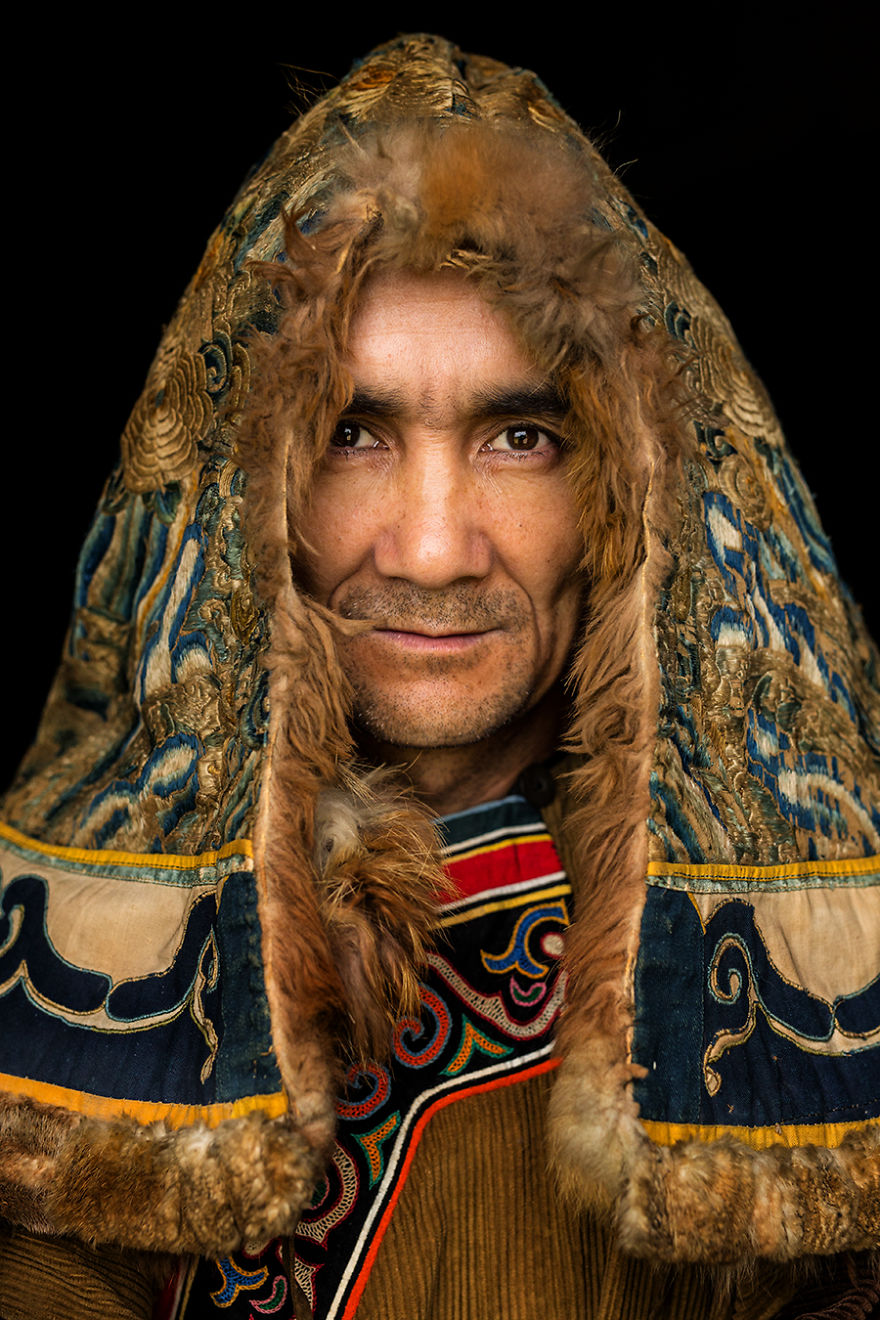 |
|
Deleted
Deleted Member
Posts: 0
|
Post by Deleted on Jul 18, 2017 16:07:03 GMT -5
Uilta/Orok girl (Tungusic) 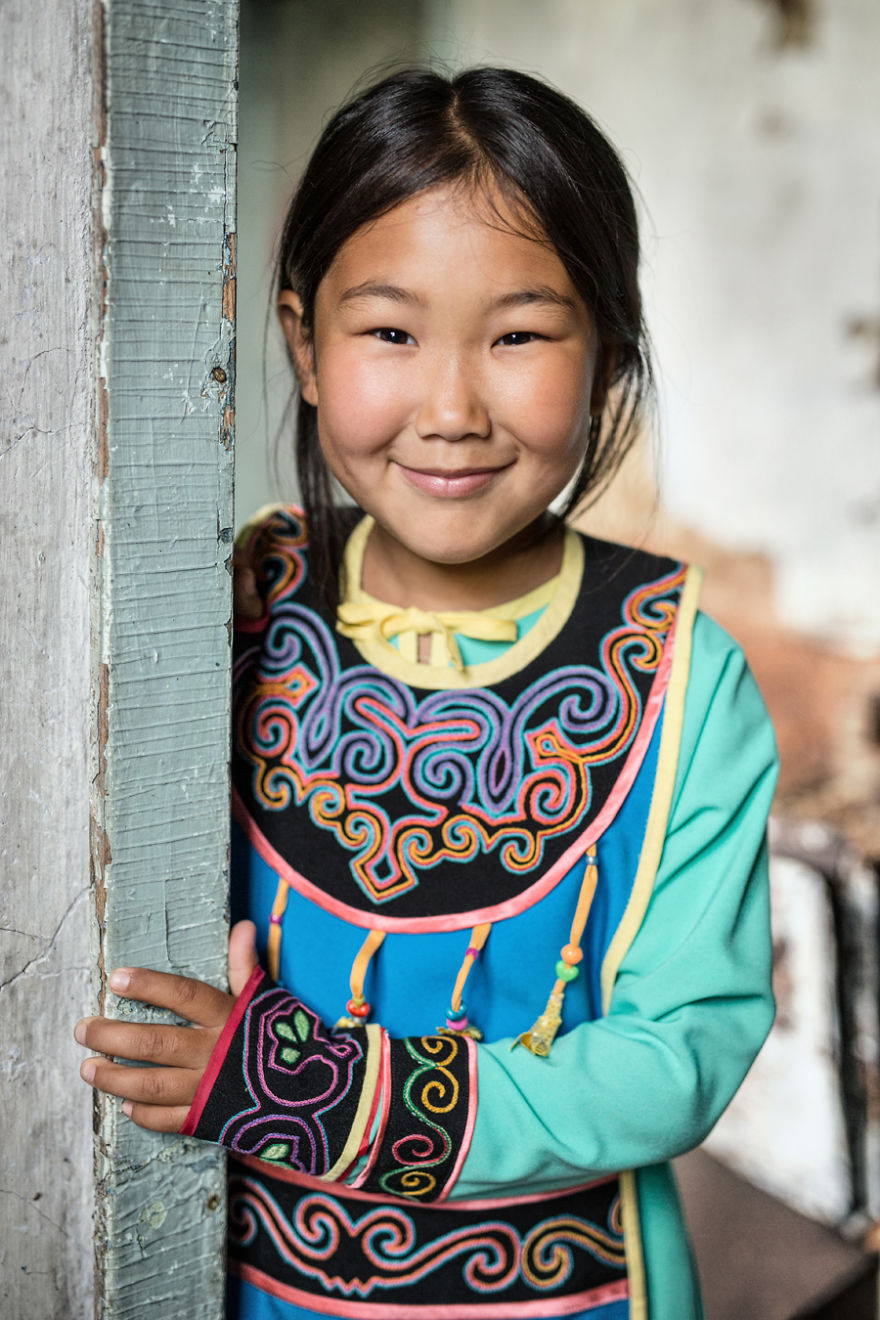 Evenki little girl (Tungusic) 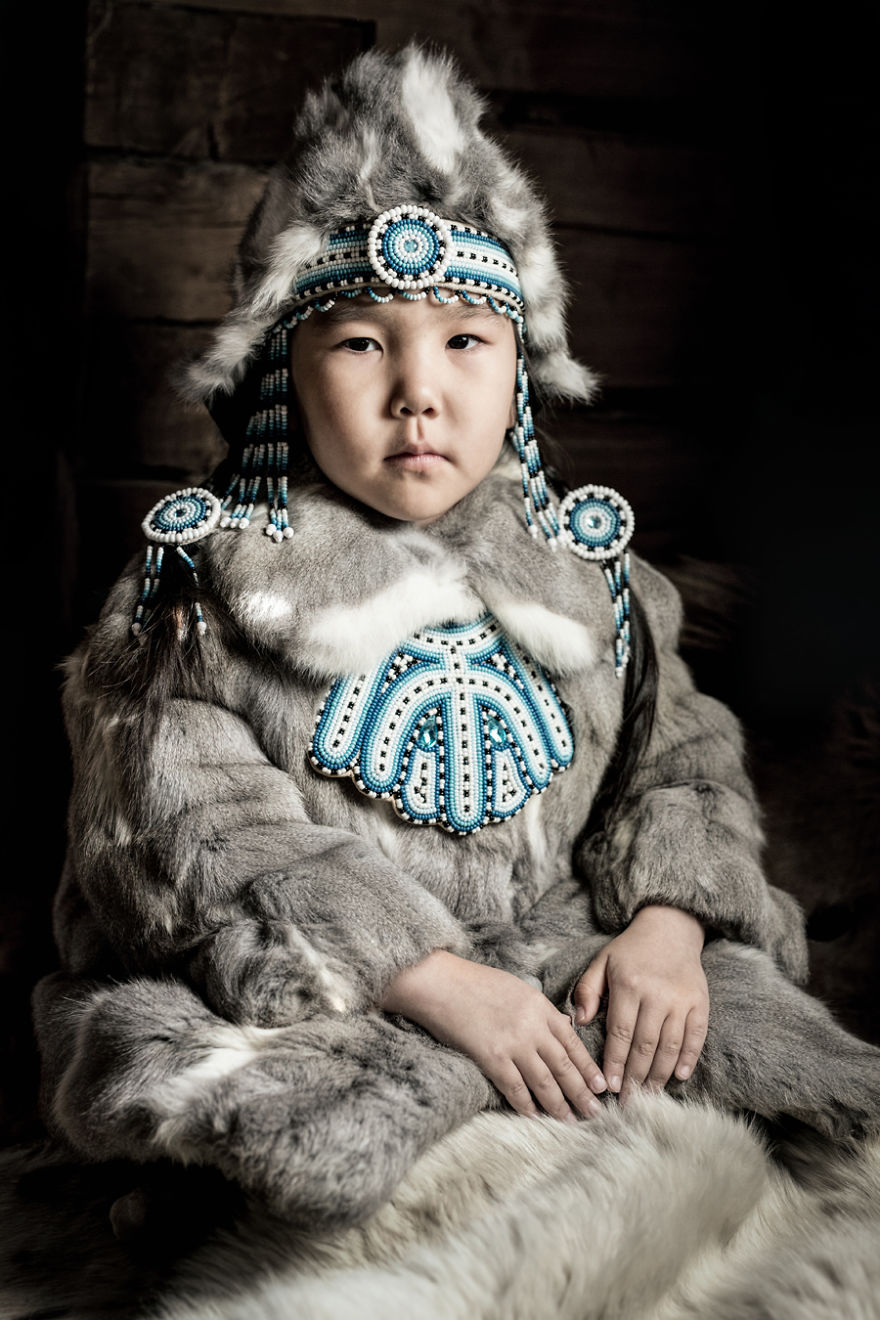 Ulchi girl (Tungusic) 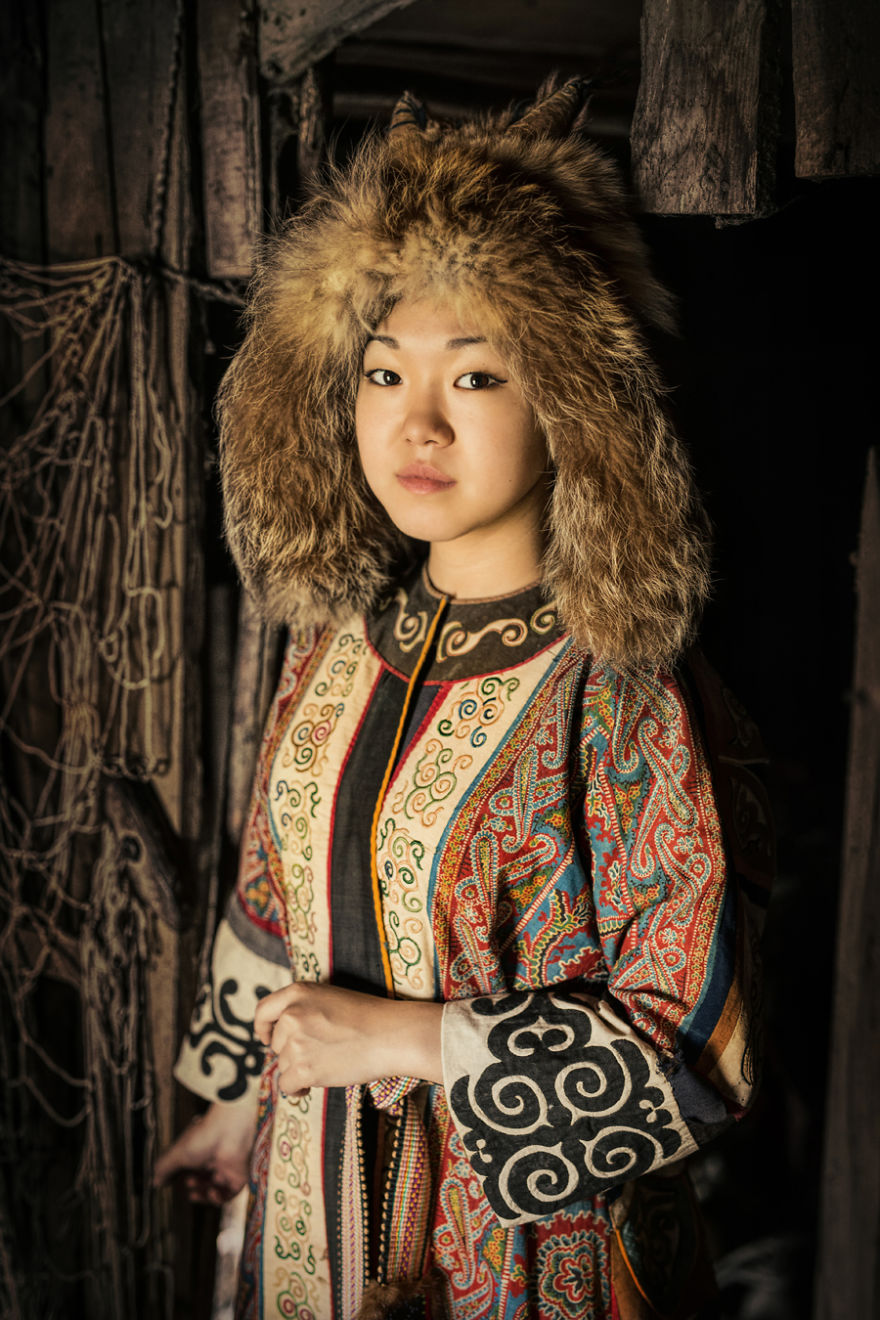 |
|
|
|
Post by deuce on Jul 19, 2017 10:52:12 GMT -5
|
|
Deleted
Deleted Member
Posts: 0
|
Post by Deleted on Jul 19, 2017 11:03:44 GMT -5
The Ket People.A short introduction on the Kets of the Yenisey in Siberia by Edward Vajda. The language of the Kets may possibly be related to the Na-Dené languages of North America. This clip also includes a Ket folk-tale related by V.A. Romanenkova. The tale is called "How the Cuckoo Came to Be."  Ket campfire, 1914. en.wikipedia.org/wiki/Ket_people
|
|
Deleted
Deleted Member
Posts: 0
|
Post by Deleted on Jul 19, 2017 11:26:30 GMT -5
I agree, sounds way too early. The BBC article mentions the hunting birds during the Mongol era in the 13th century and sensationally, without any evidence, claims that it is a 6,000 year tradition in Mongolia? Nevertheless, there is no doubt the early Indo-European nomads and subsequently the Altaic nomads that followed them engaged in falconry. |
|